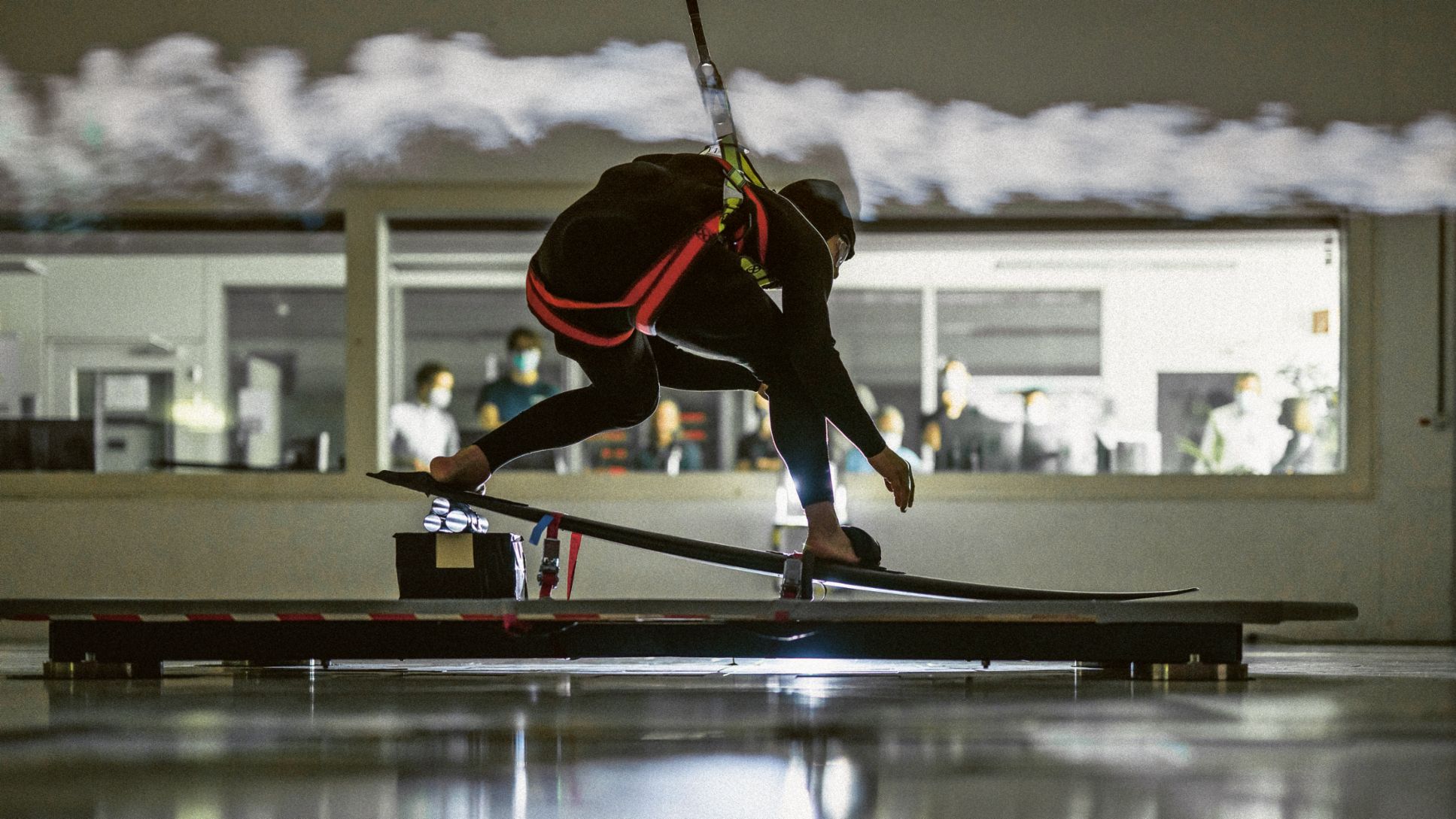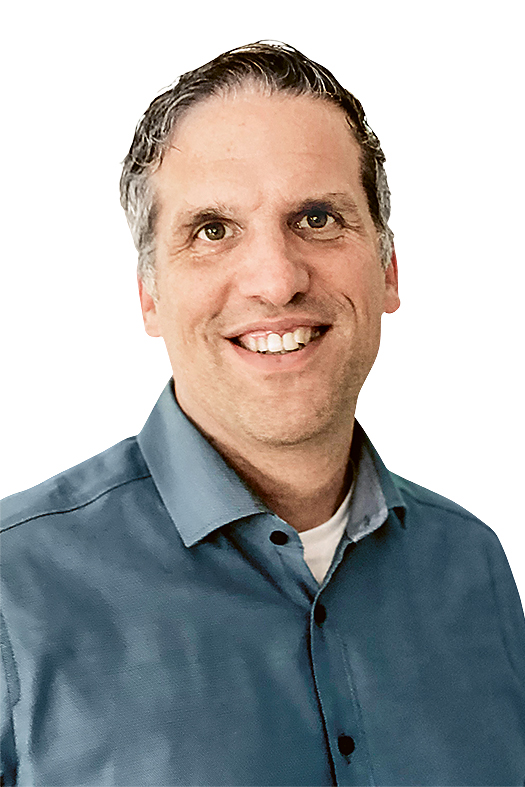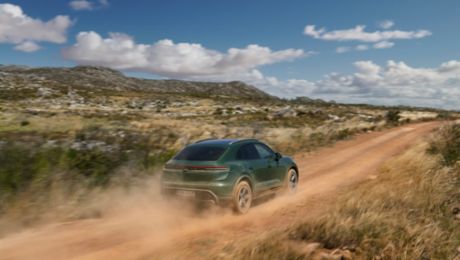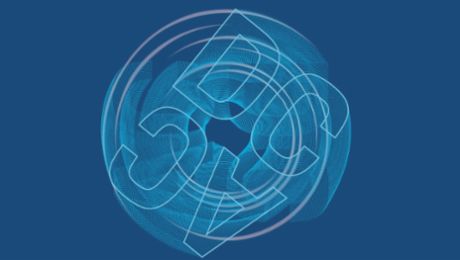With intense focus, Sebastian Steudtner faces forward as he stands on his surfboard. A fierce wind is blasting his face. He uses his right leg to correct his stance, and his left arm moves forward, almost as if to hold off an approaching wave. “Thanks, we’ve got everything we need now,” a voice suddenly says. The wind dies down, Steudtner straightens up, and a light illumi nates the scene. The bigwave surfing world champion wasn’t riding the waves in the Atlantic, but rather standing on his board in Porsche’s wind tunnel in Weissach. Here, a team led by Marcus Schmelz, Marcel Straub, and Dr. Jin Gong from Porsche Engineering is working on an ambitious project: They intend to optimize Steudtner’s equipment as well as his posture on the board. The aim is to improve his performance even further.
Porsche Engineering and Steudtner have been working together to achieve this goal since the end of last year as part of a longterm partnership between the big wave world champion and Porsche. The latest simulation methods and wind tunnel validations, for example, will be used to enhance the performance of the surfboard in the water and the aerodynamics of the board and surfer. “We are bringing together our experience in flow and structural optimization with the practical expertise of a worldrenowned surfer to create an optimized board for surfing particularly high waves,” says Project Manager Schmelz.
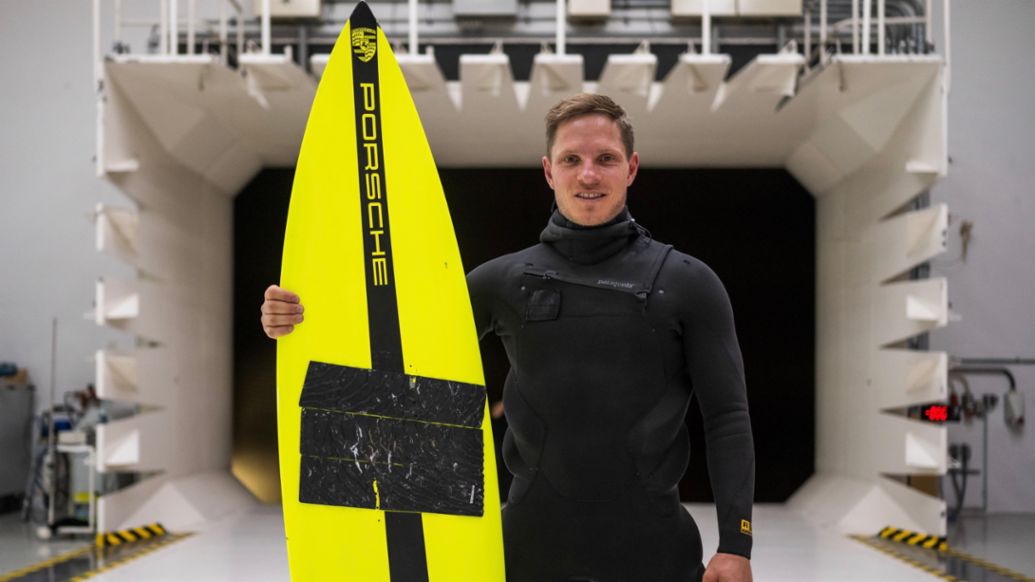
One key goal is to become faster in the water. World record holder Steudtner currently reaches speeds of 70 to 80 km/h on his surfboard. However, that’s still not enough to be able to ride significantly higher waves – because the higher a wave is, the faster the surfer has to be to keep it from crashing down over him. “My previous boards had definitely reached the technical limits,” says Steudtner.
The Porsche Engineering team is focusing on two areas that will help speed up the world champion: hydrodynamics and aerodynamics. Improving aerodynamics involves figuring out how to modify the surfer’s position on the board to achieve a noticeable reduction in drag. Hydrodynamics involves reducing pressure and skin-friction drag – by means of the position of the fins underwater, for example – and using special coatings for the board. “Everything that is in the air, we study in the wind tunnel. Everything in the water we analyze using a CFD simulation,” Gong explains. For the wind tunnel tests, a special frame was built to be able to simulate the board’s position on a wave.
Special features such as lateral currents could be recreated with the aid of a turntable. “We ran tests with the body in different positions in two test series, and also examined optimizations made to the equipment, such as the use of a head spoiler. The potential and reproducibility were confirmed,” as Gong explains.
17 percent improvement
Changes to Steudtner’s posture allowed significantly lower drag to be achieved. A position in which his right arm leans against the side of his front lower thigh and his upper body, arms and thighs are held as close together as possible proved to be optimal. With these adaptations, engineers achieved a reduction in wind resistance of almost 17 percent. On a display on the frame for the surfboard, the world champion was able to see how the wind resistance changed each time he changed position. “It was fascinating to see how much untapped potential there still is, especially by making aerodynamic improvements,” says Steudtner.
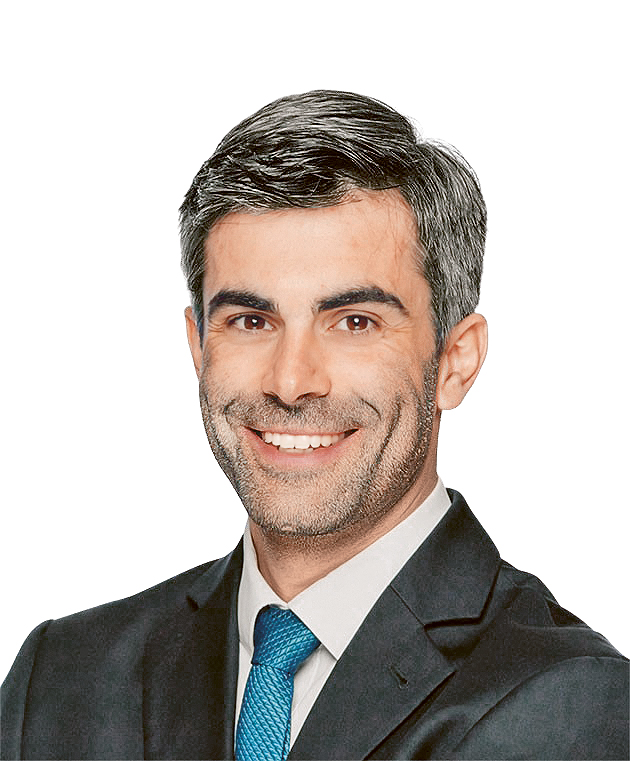
Overall, the engineers estimate that the reduction potential in terms of aerodynamic drag totals up to 25 percent. “That is a very high value. In vehicle construction, we normally talk about three to four percent,” says Straub. In addition to the 17 percent gained by optimizing the surfer’s posture, another four percent could be achieved using measures such as an optimized helmet. And the surfboard also offers plenty of potential for improvement. “In this case, we were able to improve drag by another four percent by adding a cap to the nose, and this both
in a straight inflow and with a crosswind,” Straub explains. This is comparable, he says, to the effect of wheel profiles on a vehicle’s underbody. “In both cases, it’s a matter of optimizing the wake and improving the flow to downstream ‘components’,” Straub continues. And the idea of a ‘head spoiler’ on the board is also based on insights from vehicle development. “By generating a defined tear-off edge at the head, we can make improvements in the wake area. This can be compared to tear-off edges at the rear of the vehicle, such as the C-pillar flaps on the Taycan Cross Turismo,” says Straub.
“We created a kinematics model as a basis for calculations for the wind tunnel test, this being a physical model to describe the aerodynamic and hydrodynamic system in big-wave surfing,” Gong explains. The background to this is that when the surfer enters the wave, only some of the available potential energy can be converted into speed due to losses caused by air and water resistance. “Our kinematics model allows us to analyze the influence of different components.” It provides the basis for deducing that optimizing air and water resistance plays a crucial role in surfing a giant wave,” says Gong.
Optimizing the board with CFD
At the same time as the wind tunnel tests, the surfboard was optimized using computational fluid dynamics (CFD) simulations. “They allow us to replicate and visualize flows and flow patterns,” says Gong. “This helps us discover critical points and define countermeasures.” The next step would be to verify them in a real test on the water.
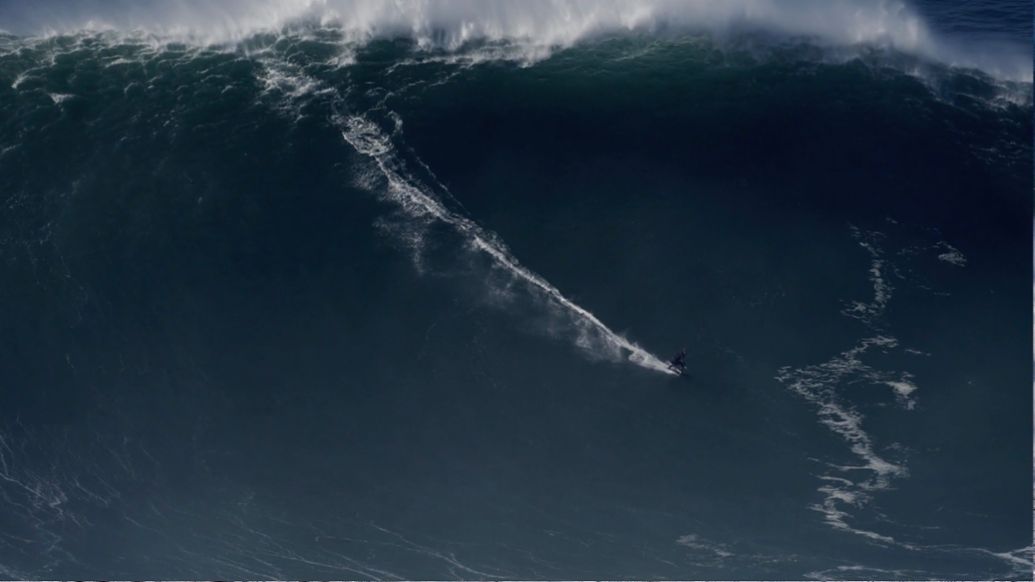
For all optimizations, the team draws on Porsche Engineering’s many years of expertise in vehicle development. “When it comes to improving aerodynamics in particular, we can apply methods from automotive development – in the case of the board, just to a completely new ‘vehicle’,” says Straub. While the modeling is different, the questions ultimately remain the same: Where and how can resistance be reduced?
Steudtner is confident that he can now ride much higher waves with the help of Porsche’s engineers: “Up to now, it has been an ongoing process with constant improvements based on my feel for the sport. Being able to use scientific data as well now is something I find very interesting. I’m curious to see how well the theory functions in practice. "As a result of the wind tunnel tests and CFD simulations, four modified boards were built that incorporate all the findings and which the big wave surfing world champion is now testing in the water. “What decides is how rideable the board is. Sebastian gives us regular feedback,” reports Straub.
Steudtner spends most of his time on the water these days. He has spent every winter in Nazaré in Portugal, about an hour north of Lisbon, since 2012. The cliff there, with its immense underwater canyon, has long since superseded Hawaii as the surfing locale with the highest waves in the world. This is where the biggest waves tower to more than 20 meters in height. Steudtner’s current world record is 26.21 meters. With the right equipment, he aims to head even higher in the future. Just how high that will be is yet another factor that the support of Porsche Engineering will help to ascertain more precisely in the future: Porsche engineers are developing a new system to replace the imprecise measurement of wave heights using video footage and still images – ensuring that Steudtner’s ascent into new dimensions can be precisely documented.
Summary
In order to ride higher waves, Sebastian Steudtner has to reach greater speeds in the water. The Porsche Engineering team is using hydrodynamics and aerodynamics as a basis for this. It also involves the use of tried-and-tested methods from automotive development. Steudtner tests the modified boards in Portugal after optimization.
Info
Text first published in the Porsche Engineering Magazine, issue 1/2023
Author: Claudius Lüder
Photos: Joerg Mitter, Jorge Neal
Copyright: All images, videos and audio files published in this article are subject to copyright. Reproduction in whole or in part is not permitted without the written consent of Dr. Ing. h.c. F. Porsche AG is not permitted. Please contact newsroom@porsche.com for further information.
